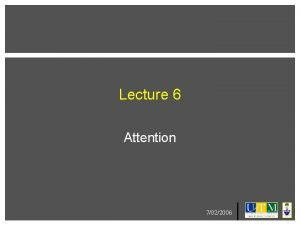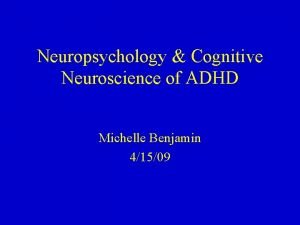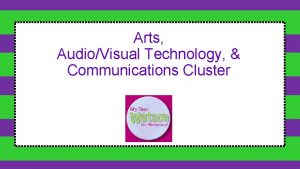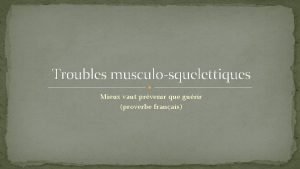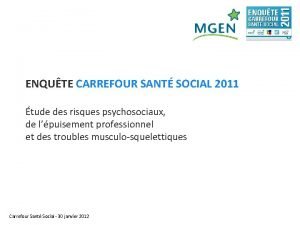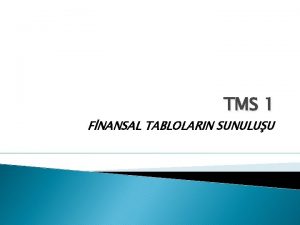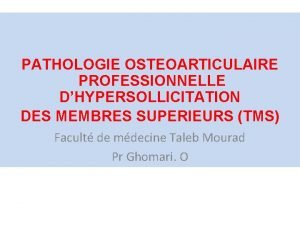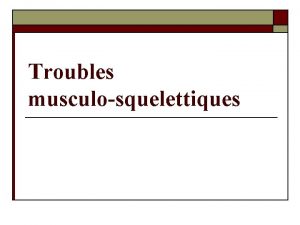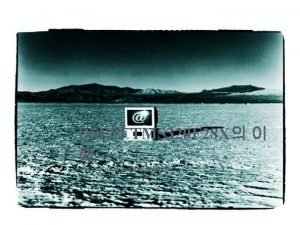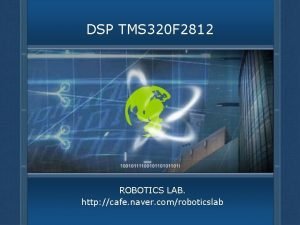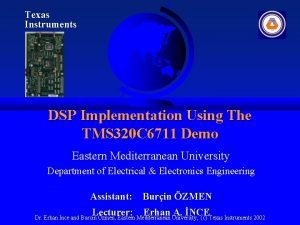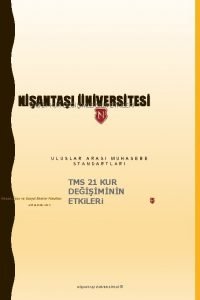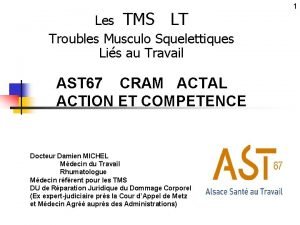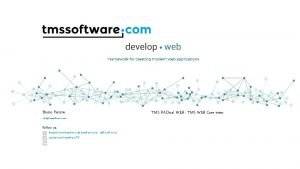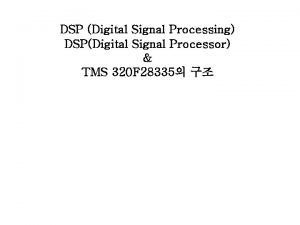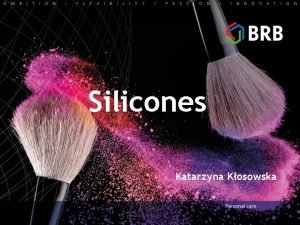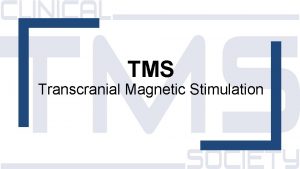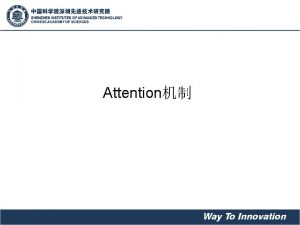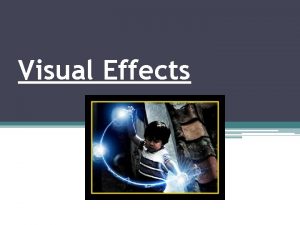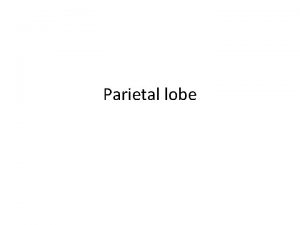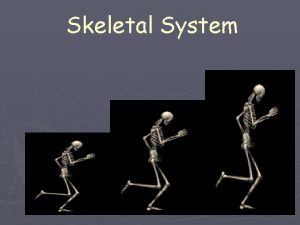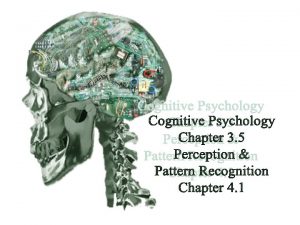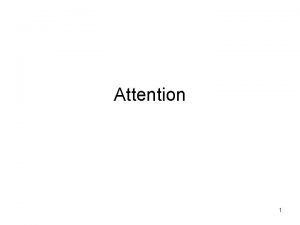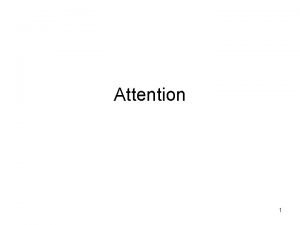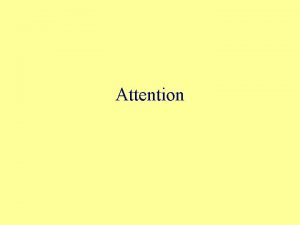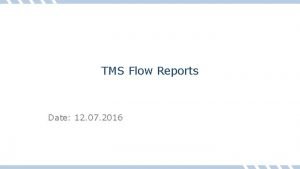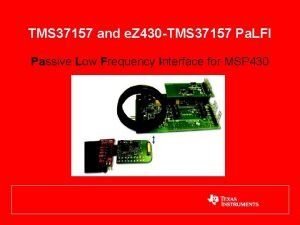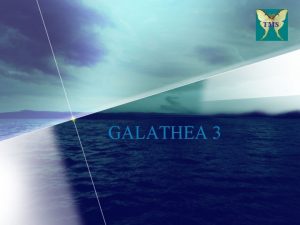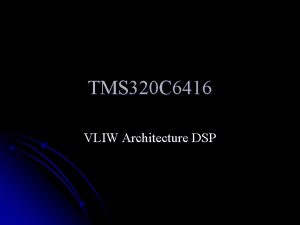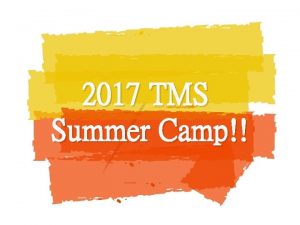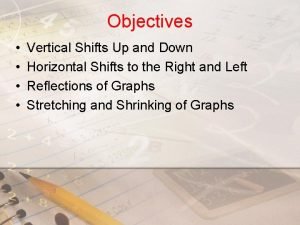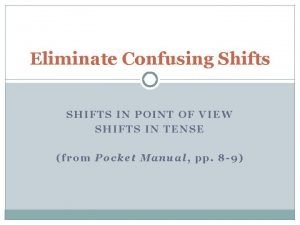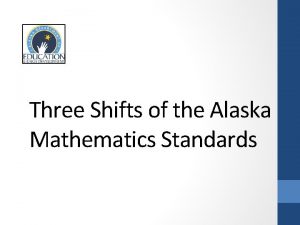Effects of parietal TMS on visual attention shifts




















- Slides: 20

Effects of parietal TMS on visual attention shifts Mark Dennison & Ramesh Srinivasan, Ph. D Human Neuroscience Laboratory University of California, Irvine hnl. ss. uci. edu

TALK OVERVIEW ● Attentional control in posterior parietal cortex (PPC) ● Transcranial Magnetic Stimulation (TMS) ● Analyses ● Significance and implications

COVERT SPATIAL ATTENTION – Most attentional shifts are accompanied by shifts in eye, head and bodily orientation (overt attention) – Often need to attend to a stimulus without directly orienting towards it (covert attention) – Visual example: Fighter pilot HUDs – How can we measure this? http: //strikefighterconsultinginc. com/wp-content/uploads/2012/03/url 10. jpg

STIMULUS Rapid Serial Visual Presentation (RSVP) 1 180 frames/trial, 60 Hz refresh rate Left Letter Flicker: 10 Hz Right Letter Flicker: 7. 5 Hz ~1500 ms ~33 ms ~1500 ms 1000 ms 1. Modified version of Sperling et al. , 1980

WHAT BRAIN REGIONS CONTROL ATTENTION? ● ● A network of parietal and frontal regions appears to be responsible for top-down modulations of visual attention 2 Posterior parietal cortex (PPC) acts as the central hub for control of attentional shifts 3 2. Yantis et al. , 2002, 2003 3. Greenberg et al. , 2010 http: //www. livescience. com/7110 -store. html

LATERALITY OF PPC Regions of the left PPC are responsible for maintaining the current attentional state 5 Regions of right PPC are active during shifts of attention to either the left or right side of space 4 4. Yantis et al. , 2002 5. Serences et al. , 2006 http: //www. ning. com/code/wp-content/uploads/2011/04/brain. jpg

HOW CAN WE MODULATE BRAIN NETWORKS? -Transcranial magnetic stimulation (TMS) is a form of noninvasive brain stimulation -TMS induced neuronal depolarization over PPC will likely trigger action potentials across the whole attentional network with time and functionally specific dynamics 6 6. Garcia et al. , 2011 http: //www. berkeley. edu/news 2/2010/09/leftright. jpg

TMS CONFIGURATION Left PPC Right PPC

THE CURRENT STUDY ➢ Can we use cortical stimulation to enhance attentional control? Is there a temporal window in which pulsing is most effective? http: //etc. usf. edu/clipart/33000/33074/clock-03 -20_33074. htm Does hemisphere of stimulation matter?

TMS BY TRIAL CONFIGURATION Trial Start Cue Trial End Subject Response Pulse Time (ms after cue) 0 32 64 96 128 160 192 No TMS

STIMULUS BLOCK INFORMATION One Block = 112 trials 56 left switches 7 trials of each pulse condition 56 right switches 7 trials of each pulse condition Randomized

SUBJECTS ● 4 subjects: two males, two females ● None reported ever having: ● – head trauma – personal or family history of epilepsy – other neurological disorders that might have been affected by the TMS pulse Experiment participation over three separate days – Day 1: One block of training without TMS – Day 2 & 3: Three blocks with TMS over P 1 or P 2 each day

ANALYSES Cue Letter corresponding to response Δ ● ● ● Attention shift times (Δ) averaged across key presses for each subject Data binned according to: – timing of the TMS pulse (0, 32, 64, …, 192, No TMS) – hemisphere of stimulation (Left vs Right PPC) – side of attentional deployment (Left vs Right) Performed an 8 X 2 ANOVA and multiple comparison analysis for each subject

RESULTS Separate Block of no TMS trials collected on another day to compare with interleaved condition F(7, 8) = 4. 16, p <. 0005 F(7, 8) = 2. 92, p =. 0051 SB: F(7, 9) = 10. 35, p <. 0000

RESULTS Main Effect of Stimulation Side by Subject LP RP F(1, 2) = 16. 21, p <. 0005 LP RP F(1, 2) = 22. 17, p <. 0000

RESULTS Main Effect of Shift Side by Subject F(1, 2) = 13. 95, p <. 0005 F(1, 2) = 5. 81, p =. 0163 F(1, 2) = 84. 05, p <. 0000 F(1, 2) = 9. 91, p =. 0017

SUMMARY RESULTS ● ● High pulse timing resolution may not be important for attentional enhancement Right PPC stimulation appears to speed attentional shifts

IMPLICATIONS & FUTURE WORK ● ● ● Individual differences abound in TMS effectiveness Measurement of online neural activity (f. MRI/EEG) during covert attention shifts under influence of parietal stimulation is necessary Successful attentional enhancement through TMS of right PPC may serve useful in: – Post-stroke / traumatic brain injury rehabilitation – Human performance enhancement

THANK YOU! ● UROP ● HNL members ● Dr. Ramesh Srinivasan & Dr. Emily Grossman (UCI) ● Dr. Javier Garcia (UCSD)

QUESTIONS ?
 Parietal lobe attention
Parietal lobe attention Michelle benjamin phd
Michelle benjamin phd Visual effects meet
Visual effects meet Tms coude
Tms coude Tms carrefour puissance
Tms carrefour puissance Tam bir finansal tablolar setinde neler yer alır
Tam bir finansal tablolar setinde neler yer alır Note de cadrage tms pro
Note de cadrage tms pro Tms
Tms Tms définition
Tms définition Tms dsp
Tms dsp Tms 320
Tms 320 Tms dsp
Tms dsp Tms training melbourne
Tms training melbourne Contractor onboarding checklist
Contractor onboarding checklist Tms magazine
Tms magazine Tms 21
Tms 21 Tms
Tms Tms 6000
Tms 6000 Tms web core crack
Tms web core crack Tms signal
Tms signal Brb dm 100
Brb dm 100
